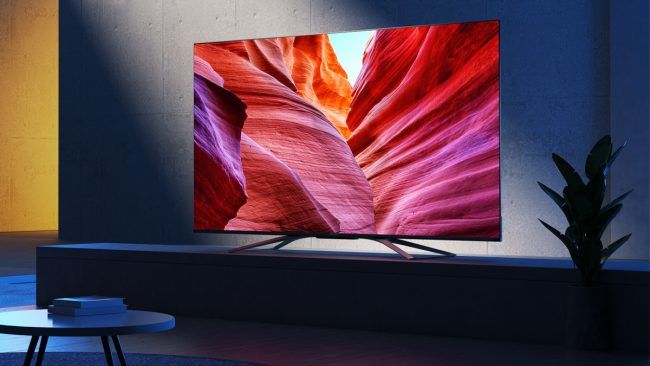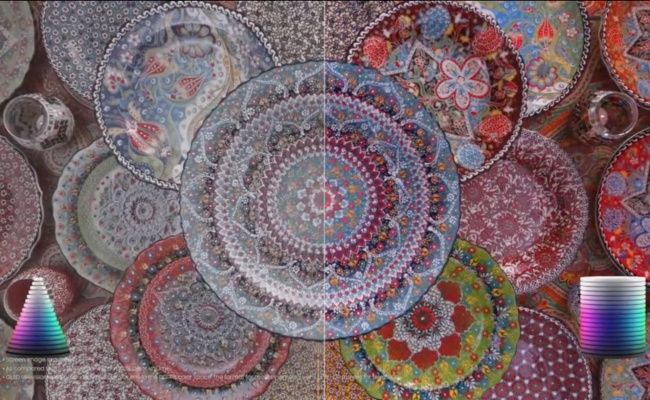Quick Links
If you have looked for a new TV in the last few years, you have probably seen Hisense touting its ULED TVs. Here's how these new ULED TVs differ from QLED and NanoCell TVs.
It's All About Marketing
TV manufacturers, like most consumer electronics makers, love to coin new marketing terms to entice consumers. And ULED or Ultra LED is one such marketing term, rather than some ground-breaking new technology. ULED televisions are essentially LED-backlit LCD TVs with extra bells and whistles, but that is a very simplistic definition.
Hisense says it uses the term "ULED TV" to highlight its LED televisions that have at least 4K resolution and use the company's patented enhancements in color gamut, local dimming, and motion smoothing.
Among these enhancements, the ULED TVs offer a wide color gamut and can display 99.98% of the DCI-P3 color space. This means the ULED televisions can provide lifelike and accurate colors.
The ULED TVs also use full-array local dimming to enhance the contrast ratio. With local dimming, the televisions can dim the LED backlights in specific zones for deeper blacks. However, barring the company's flagship U9DG ULED TV, which has over 2,000,000 local dimming zones, the rest of the ULED lineup only has anywhere from 32 to 360 dimming zones.
The presence of at least 4K resolution is another vital part of a ULED TV. 4K or 3,840 x 2,160 pixels resolution provides four times the number of pixels in a full-HD TV, thus providing sharper pictures and videos.
Finally, UltraSmooth Motion technology is also present in ULED TVs. This is basically a type of motion smoothing in which the TV artificially inserts black frames or periods of darkness by strobing backlight on and off. It's done to reduce motion blur in content with fast-moving subjects or objects.
Are Enhancements Present in ULED TVs Exclusive To Hisense?
These enhancements aren't actually exclusive to Hisense TVs.
The ULED marketing, which touts Hisense's 20 proprietary patents, makes it seem like it's something exclusive. But while these patents may be exclusive to Hisense, all the enhancements that we discussed earlier are also found in TVs from other manufacturers.
Almost all major TV makers offer full-array local dimming, 4K resolution, and motion smoothing in at least some of their models. Unfortunately, a wide color gamut with nearly complete DCI-P3 coverage is slightly less common. But still, there are several TV models, like LG's QNED Mini-LED TVs, Samsung's QLED lineup, and some of Vizio's TV models, that provide almost 100% DCI-P3 coverage.
How Are QLED and NanoCell TVs Different From ULED TVs?
While QLED and NanoCell TVs get their name from specific technologies present in them, ULED TVs, as explained above, employ a bunch of features and enhancements to provide a great experience and have no one specific signature technology. Many ULED TVs even include a Quantum Dot layer to get the same benefits as a QLED TV. So a comparison among ULED, QLED, and NanoCell TVs isn't really an apples-to-apples comparison.
QLED or Quantum LED TVs come with a layer of nanocrystals or quantum dots that enhance both color and contrast of the screen. This means you get vibrant and significantly boosted pictures compared to a non-QLED TV. While "proper" quantum dots emit light themselves, modern QLED TVs have a separate light source.
NanoCell TVs also attempt to do the same, but the underlying technology is different. They come with a nanoparticle filter that absorbs specific wavelengths of lights to 'purify' or enhance the color output. This results in more accurate and lifelike colors. Another crucial part of a NanoCell TV is its IPS panel that provides wider viewing angles, compared to a VA panel that you will find in most QLED TV and ULED TVs. However, the VA panels have a better contrast ratio than IPS panels.
QLED TVs aren't limited to one specific manufacturer but are sold by Samsung, Hisense, TCL, and others. On the other hand, NanoCell TVs are only offered by LG.
A Marketing Term for Hisense TVs
All in all, ULED is not an industry-recognized term or a certification with some minimum standards. What is or is not a ULED TV depends on Hisense's whims. It's just a marketing term introduced to make the Hisense TVs stand out in a crowded market. However, it doesn't mean that ULED TVs are somehow inferior to TVs from competitor brands.
As a consumer, don't overthink the ULED moniker; focus on specific features you want, and look for them in Hisense televisions rather than putting too much stock in the "ULED" marketing term.



